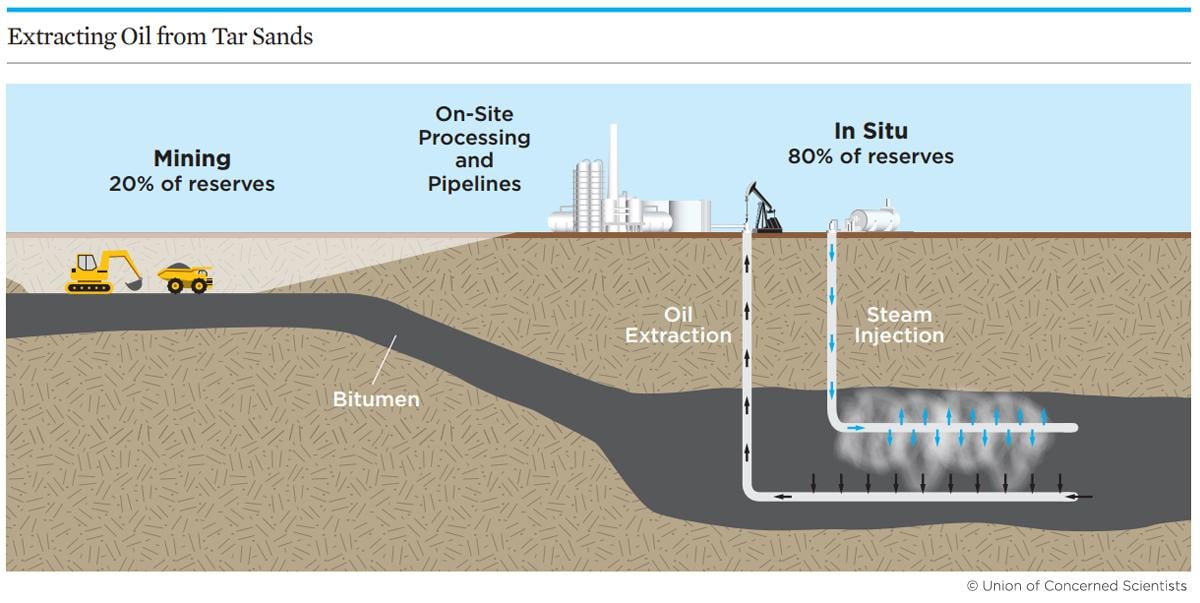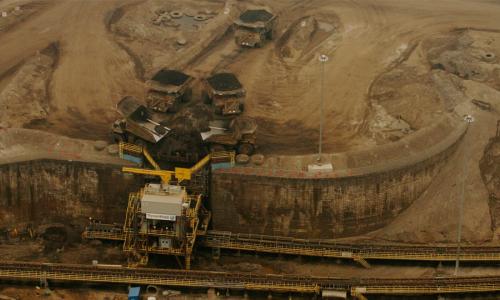Tar sands (also known as oil sands) are a mixture of mostly sand, clay, water, and a thick, molasses-like substance called bitumen. Bitumen is made of hydrocarbons—the same molecules in liquid oil—and is used to produce gasoline and other petroleum products.
Extracting bitumen from tar sands—and refining it into products like gasoline—is significantly costlier and more difficult than extracting and refining liquid oil.
Common extraction methods include surface mining—where the extraction site is excavated—and “in-situ” mining, where steam is used to liquefy bitumen deep underground. The largest deposits of tar sands are found in Alberta, Canada.
While tar sands have been in production since the late 1960s, and currently account for about 5 percent of all U.S. gasoline, production has been scaling up—which could have serious consequences for the air, water, and climate.
Environmental impacts of tar sands
On a lifetime basis, a gallon of gasoline made from tar sands produces about 15% more carbon dioxide emissions than one made from conventional oil.
This important difference is attributable to the energy intensive extraction, upgrading, and refining process.
Unfortunately, the carbon emissions associated with extracting tar sands could increase over time, as in-situ mining—which creates more emissions than surface mining—is used to extract bitumen located deeper and deeper in the earth.
Tar sands also impact water supplies. For every gallon of gasoline produced by tar sands, about 5.9 gallons of freshwater are consumed during the extraction, upgrading, and refining process. That’s roughly three times as much as used for conventional oil.
Much of this water is polluted by toxic substances harmful to human health and the environment. When surface mining is used, the wastewater ends up in toxic storage ponds. These ponds can cover over 30 square miles—making them some of the largest man-made structures on the planet.
When in-situ mining is used, wastewater is stored in the same well the bitumen is extracted from—risking contaminated groundwater if a leak occurs.

The solution: Half the oil
By investing in practical solutions to cut projected U.S. oil use in half, we can minimize the need to tap dirtier and more expensive resources—none of which represent the progress so sorely needed in the energy sector. And having generated a disproportionate share of the world’s carbon emissions, the world’s largest oil and gas companies have a unique responsibility for cutting emissions from their own operations. That includes avoiding the dirtiest oil resources, such as tar sands.




